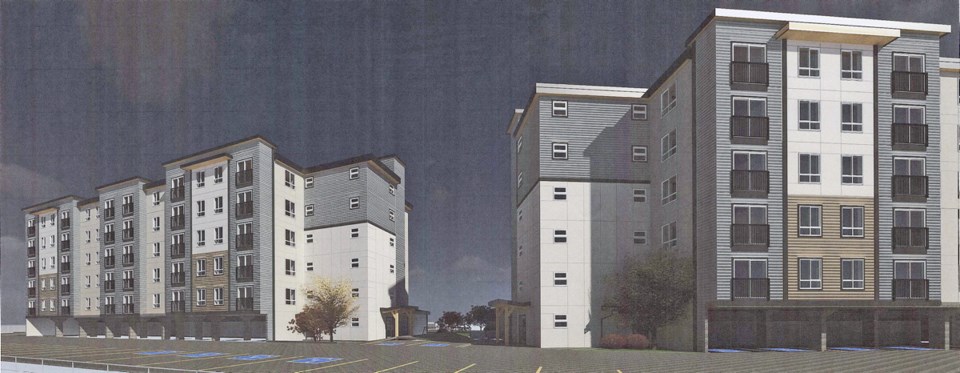View Royal town council has issued development permits for the town’s first not-for-profit affordable housing project but remains undecided about waiving almost $1 million in associated development-cost charges.
“I think it’s certainly important to the overall viability of the project that we consider waiving the DCCs, for sure. That’s my personal opinion,” said Mayor David Screech, who also serves as vice chair of the Capital Region Housing Corporation board.
View Royal councillors have already given approval in principle to the development-cost charges waiver, Screech said.
But after extensive public consultation, including a town hall and hearing presentations Tuesday evening, the town council remains split on whether to waive the $926,440 in development-cost charges, he said.
“Needless to say, there is a little bit of discord on council about it,” Screech said. Council deferred consideration of the development-cost charges waiver until next month.
Councillors did agree to issue a development permit for the two six-storey rental housing buildings at 1938 West Park Lane, the site of the former Thetis Lake trailer park, Screech said.
“We did approve the buildings themselves, so that was a huge step. So the development permits for the new affordable housing buildings were approved,” Screech said.
The 152-unit housing project on a 5.18-hectare triangular site north of the Trans-Canada Highway backing onto Thetis Lake Park is planned to be part of the region’s housing-first program and is to be owned and operated by the Capital Region Housing Corporation.
Half the units are to have rents below market rates. The other half are near or at market rates.
Development-cost charges are fees levied by a municipality to cover the cost of infrastructure such as roads, sewer and water, drainage, and parks necessitated by new development.
Christine Culham, Capital Regional District senior manager of regional housing, said West Park Lane is a turn-key project.
The parcel will be subdivided into two lots. The builder, Limona Properties, will own one lot and develop a 200-unit townhouse complex while the CRD will own the other lot with two 76-unit buildings of mixed market units.
The View Royal staff report says concerns raised by the public over the development-cost charges waiver included: the site is a poor location for the proposal; taxpayers shouldn’t subsidize developers’ costs or provincial housing; worries that the costs would be passed on to the taxpayers; the size of the waiver was too much; the majority of the units were not affordable; and concerns about drug use by future tenants.
Some said relaxation of development-cost charges should be given for only those 34 units that are at income-assistance levels.
“There are a lot of worries that by waiving the DCCs that peoples’ taxes will go up and that’s just not true,” Screech said.
Several people wrote in support of the waiver.
Council rezoned the former site of the Thetis Lake campground and trailer park in 2017 for up to 350 apartment units.
A staff report notes that View Royal has contributed $354,000 to the regional affordable housing trust fund over the past 15 years and no affordable projects have been built within town boundaries.
“Although there is a non-profit apartment building on the Island Highway, it was built over 30 years ago prior to View Royal’s incorporation. This is the first proposal received since View Royal was incorporated in 1991,” the report says.
The project will consist of 32 studios, 76 one-bedroom and 44 two-bedroom apartments.
The apartments will be both non-market and some near-market rental housing. Twenty per cent of the units will be offered at shelter rates, 31 per cent at affordable rental (less than 30 per cent of household income per month), and the remaining units will be offered at just below, or at market rates.
The developer has indicated that the not-for-profit development isn’t financially feasible without a development-cost charges waiver, staff say.
Shelter rates are based on someone receiving social or disability assistance paying no more than 30 per cent of their income on housing.



